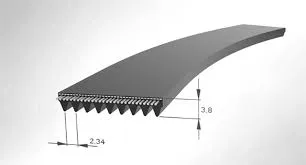- Arabic
- French
- Russian
- Spanish
- Portuguese
- Turkish
- Armenian
- English
- Albanian
- Amharic
- Azerbaijani
- Basque
- Belarusian
- Bengali
- Bosnian
- Bulgarian
- Catalan
- Cebuano
- Corsican
- Croatian
- Czech
- Danish
- Dutch
- Afrikaans
- Esperanto
- Estonian
- Finnish
- Frisian
- Galician
- Georgian
- German
- Greek
- Gujarati
- Haitian Creole
- hausa
- hawaiian
- Hebrew
- Hindi
- Miao
- Hungarian
- Icelandic
- igbo
- Indonesian
- irish
- Italian
- Japanese
- Javanese
- Kannada
- kazakh
- Khmer
- Rwandese
- Korean
- Kurdish
- Kyrgyz
- Lao
- Latin
- Latvian
- Lithuanian
- Luxembourgish
- Macedonian
- Malgashi
- Malay
- Malayalam
- Maltese
- Maori
- Marathi
- Mongolian
- Myanmar
- Nepali
- Norwegian
- Norwegian
- Occitan
- Pashto
- Persian
- Polish
- Punjabi
- Romanian
- Samoan
- Scottish Gaelic
- Serbian
- Sesotho
- Shona
- Sindhi
- Sinhala
- Slovak
- Slovenian
- Somali
- Sundanese
- Swahili
- Swedish
- Tagalog
- Tajik
- Tamil
- Tatar
- Telugu
- Thai
- Turkmen
- Ukrainian
- Urdu
- Uighur
- Uzbek
- Vietnamese
- Welsh
- Bantu
- Yiddish
- Yoruba
- Zulu
Okt . 12, 2024 06:07 Back to list
Choosing the Right Fan Belt for Your Vehicle Maintenance Needs
Understanding the Importance of Fan Belts in Cars
When it comes to the inner workings of a vehicle, many components play crucial roles in ensuring optimal performance and efficiency. Among these components, the fan belt—also known as the serpentine belt or accessory belt—holds significant importance. This article delves into what a fan belt is, its functions, why it's vital to the overall health of your vehicle, and how you can maintain it for longevity.
What is a Fan Belt?
The fan belt is a rubber or synthetic belt that connects various engine components, allowing them to work in harmony. Typically, it drives the alternator, water pump, power steering pump, and air conditioning compressor. This serpentine belt is designed to be flexible, enabling it to navigate around the pulleys and gears of the engine seamlessly. Modern vehicles predominantly use serpentine belts, which are designed to be more efficient and require less maintenance than their older counterparts.
Functions of the Fan Belt
1. Power Transmission The primary function of the fan belt is to transmit power from the engine's crankshaft to other components such as the alternator and water pump. Without this belt, these components would not receive the necessary power to operate.
2. Cooling the Engine The fan belt helps operate the radiator fan which cools the engine. This cooling is essential to prevent overheating, which can cause severe damage to internal engine components.
3. Assisting with Climate Control In vehicles equipped with air conditioning, the fan belt also drives the A/C compressor, allowing for climate control within the car. This function is particularly important for passenger comfort, especially in regions with extreme temperatures.
4. Preventing Power Steering Loss Power steering systems in modern vehicles generally rely on the fan belt. If the belt fails, drivers may find it significantly harder to steer their cars, especially while parking or making tight turns.
Signs of Fan Belt Wear
Like any part of a vehicle, fan belts are subject to wear and tear. Recognizing the signs of a failing fan belt can save you from unexpected breakdowns and costly repairs. Here are common symptoms to watch for
- Squealing Noises A high-pitched squeal can indicate that the fan belt is loose or worn out. This noise often occurs when starting the vehicle or when accelerating.
fan belt for car

- Dashboard Warning Lights Some cars have warning lights that illuminate when there's an issue with the belt or related components. Pay attention if your dashboard indicators light up unexpectedly.
- Visible Cracks or Fraying Inspect the fan belt periodically for visible signs of wear. Look for cracks, fraying, or glazing on the belt's surface, which can indicate that it’s due for replacement.
- Overheating If the engine is running hotter than usual, the fan belt may not be functioning correctly, possibly affecting the water pump’s ability to cool the engine.
Maintenance and Replacement
To extend the lifespan of your fan belt, regular maintenance is vital. Here are some tips
- Visual Inspections Conduct regular inspections of the belt’s condition. Look for any signs of deterioration, cracks, or uneven wear.
- Keep the Engine Clean Dirt and debris can accumulate on engine components and may affect the performance of the fan belt. Regular cleaning of the engine bay can help maintain its efficiency.
- Follow Manufacturer Recommendations Each vehicle may have specific guidelines regarding belt replacement intervals. Typically, fan belts should be replaced every 60,000 to 100,000 miles, but you should always refer to your vehicle’s manual for guidance.
- Professional Checks Consider having your vehicle serviced regularly by a professional mechanic, who can ensure that the fan belt and other related components are in good working order.
Conclusion
In summary, the fan belt is a crucial component that facilitates the smooth operation of several essential systems within your vehicle. From powering the alternator to assisting with engine cooling and climate control, its role cannot be overstated. By paying attention to the signs of wear and conducting regular maintenance, you can help ensure that your fan belt remains in good condition, contributing to the overall health and longevity of your vehicle. Taking proactive steps can prevent costly repairs and keep your car running efficiently for years to come.
-
Korean Auto Parts Timing Belt 24312-37500 For Hyundai/Kia
NewsMar.07,2025
-
7PK2300 90916-T2024 RIBBED BELT POLY V BELT PK BELT
NewsMar.07,2025
-
Chinese Auto Belt Factory 310-2M-22 For BMW/Mercedes-Benz
NewsMar.07,2025
-
Chinese Auto Belt Factory 310-2M-22 For BMW/Mercedes-Benz
NewsMar.07,2025
-
90916-02660 PK Belt 6PK1680 For Toyota
NewsMar.07,2025
-
drive belt serpentine belt
NewsMar.07,2025

